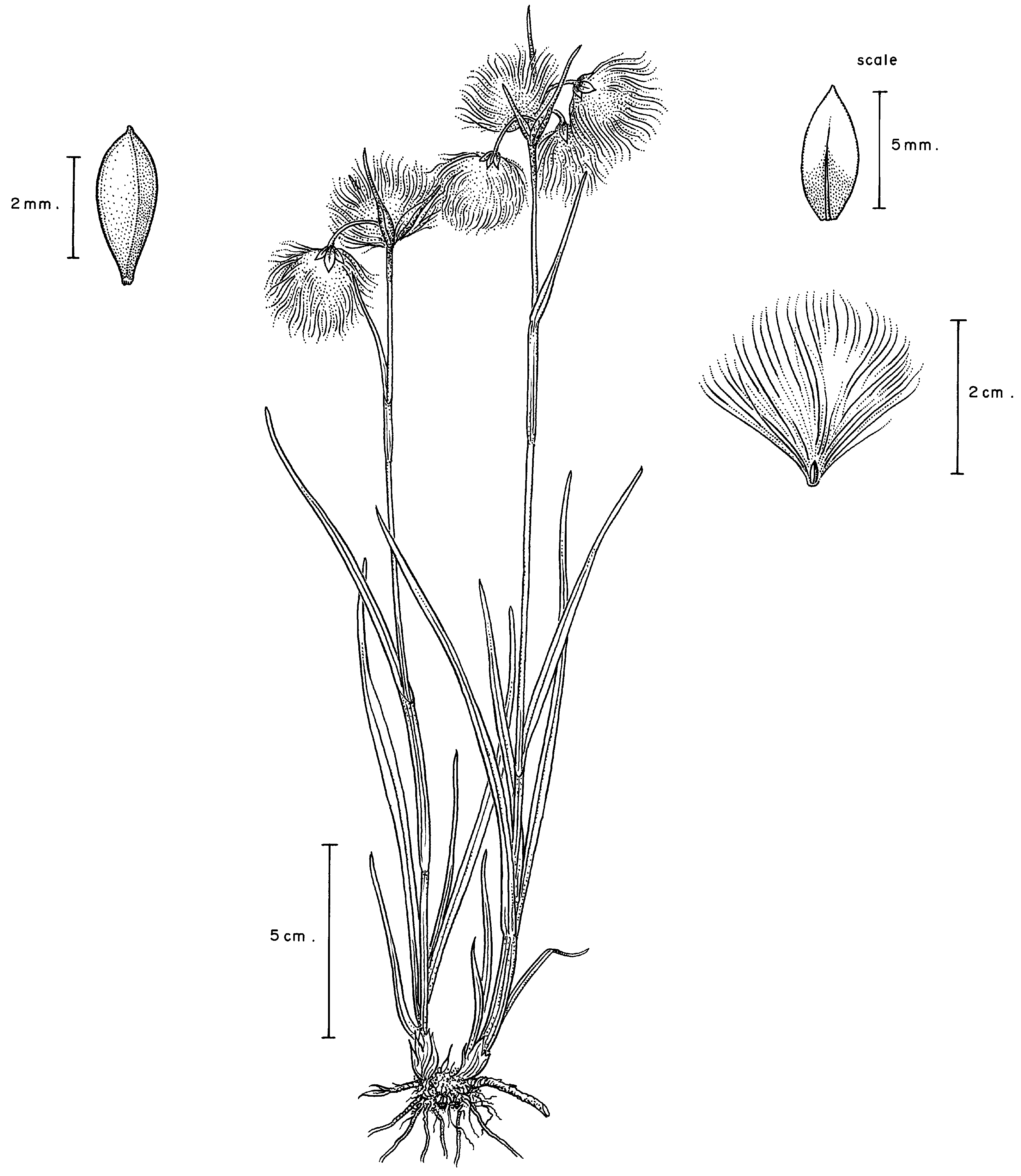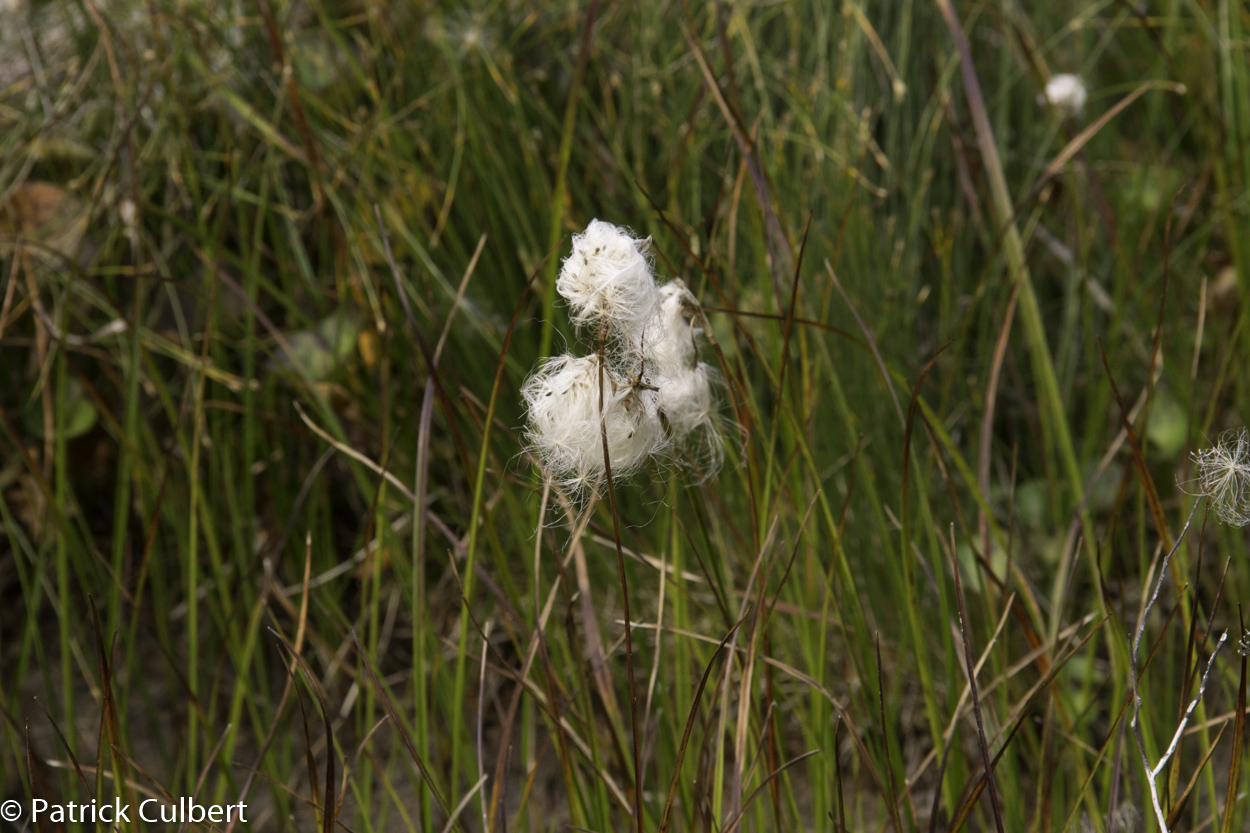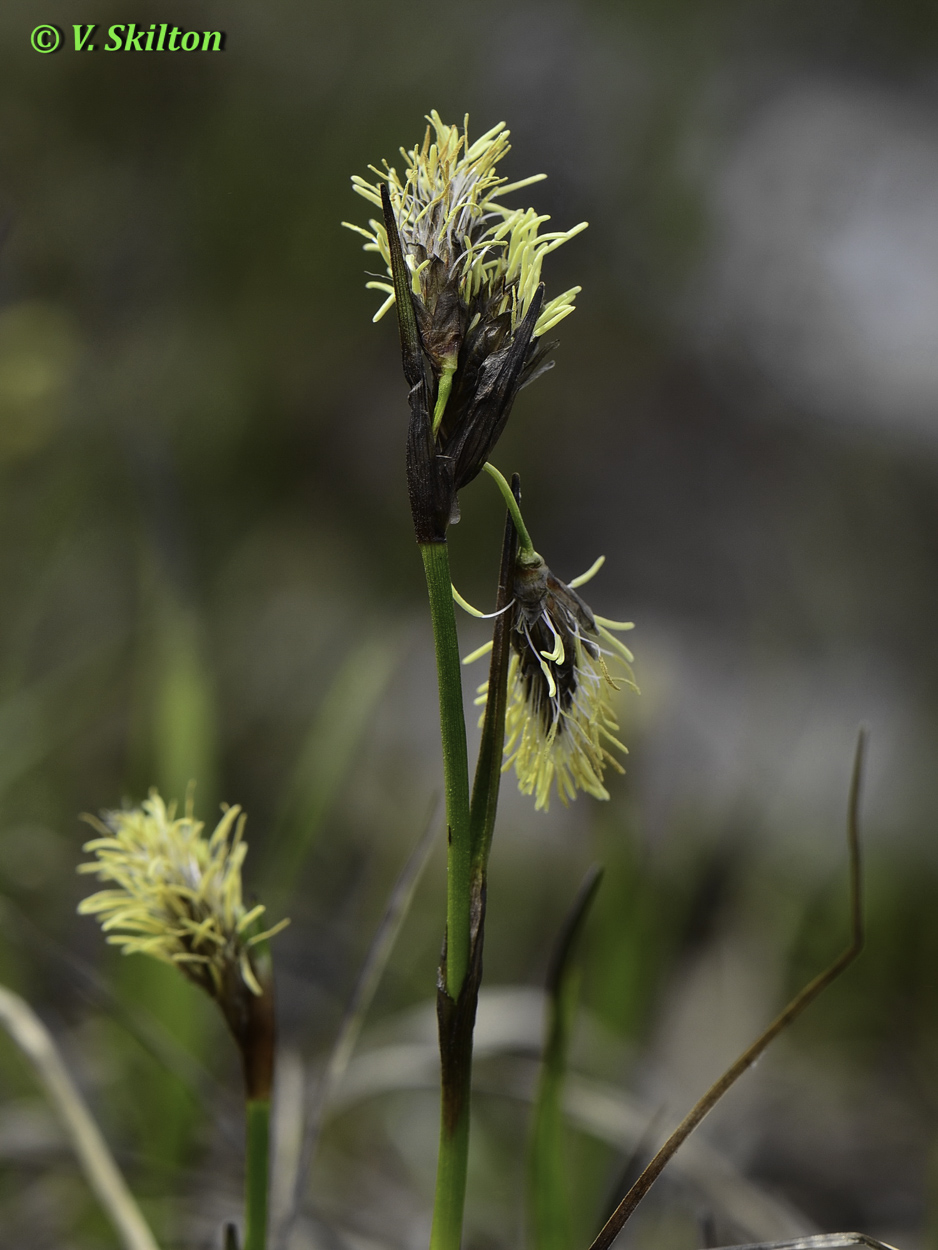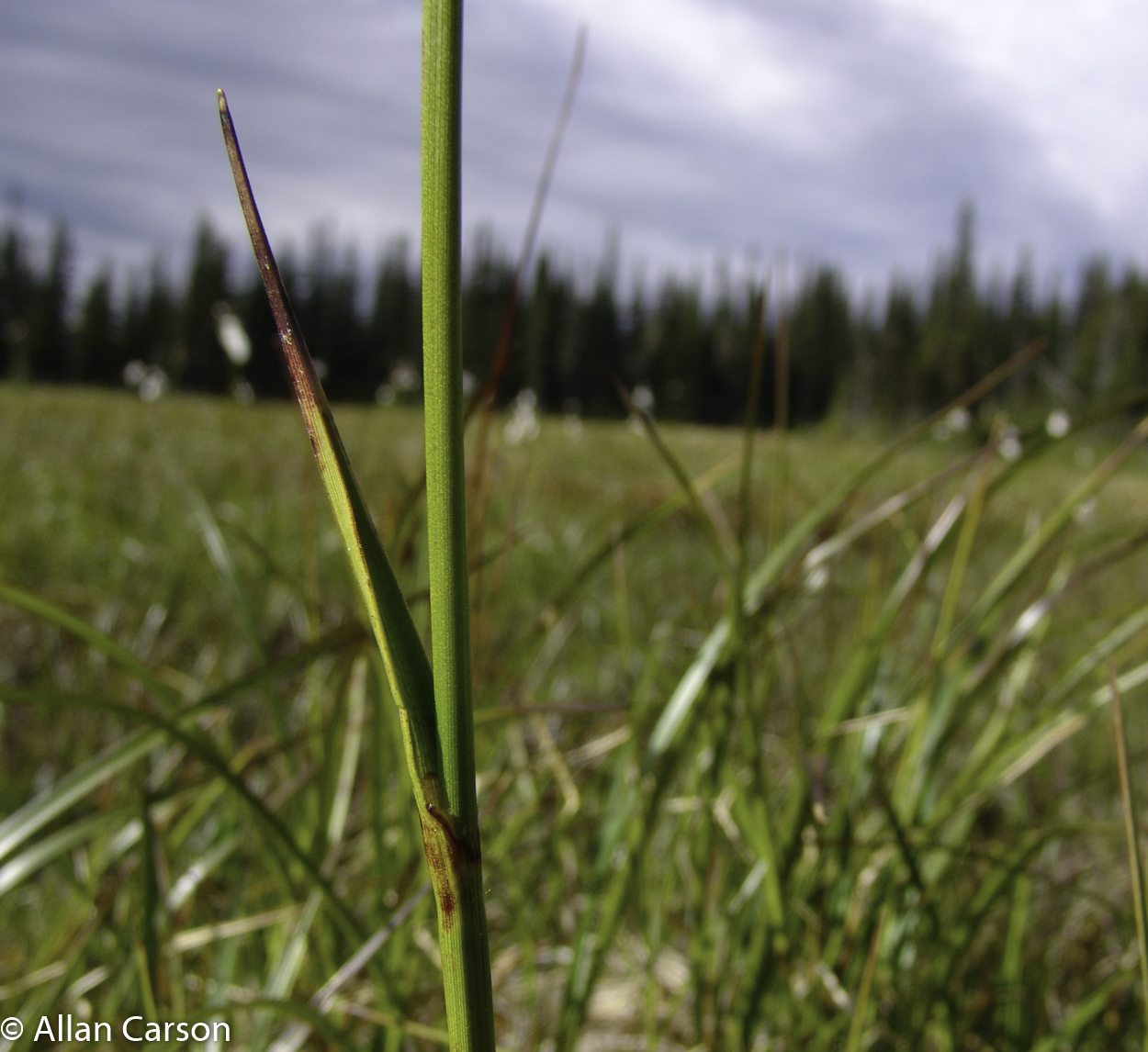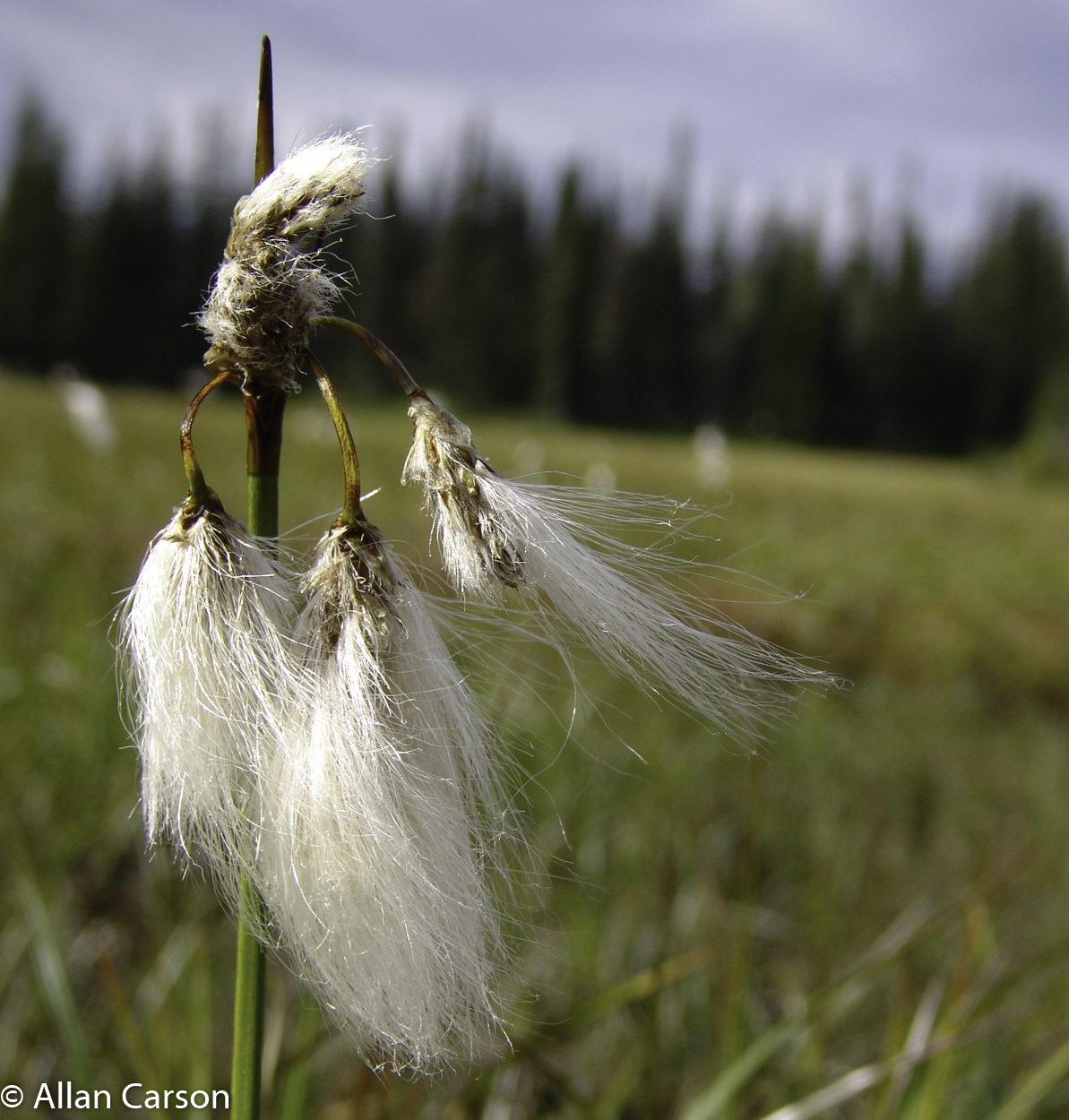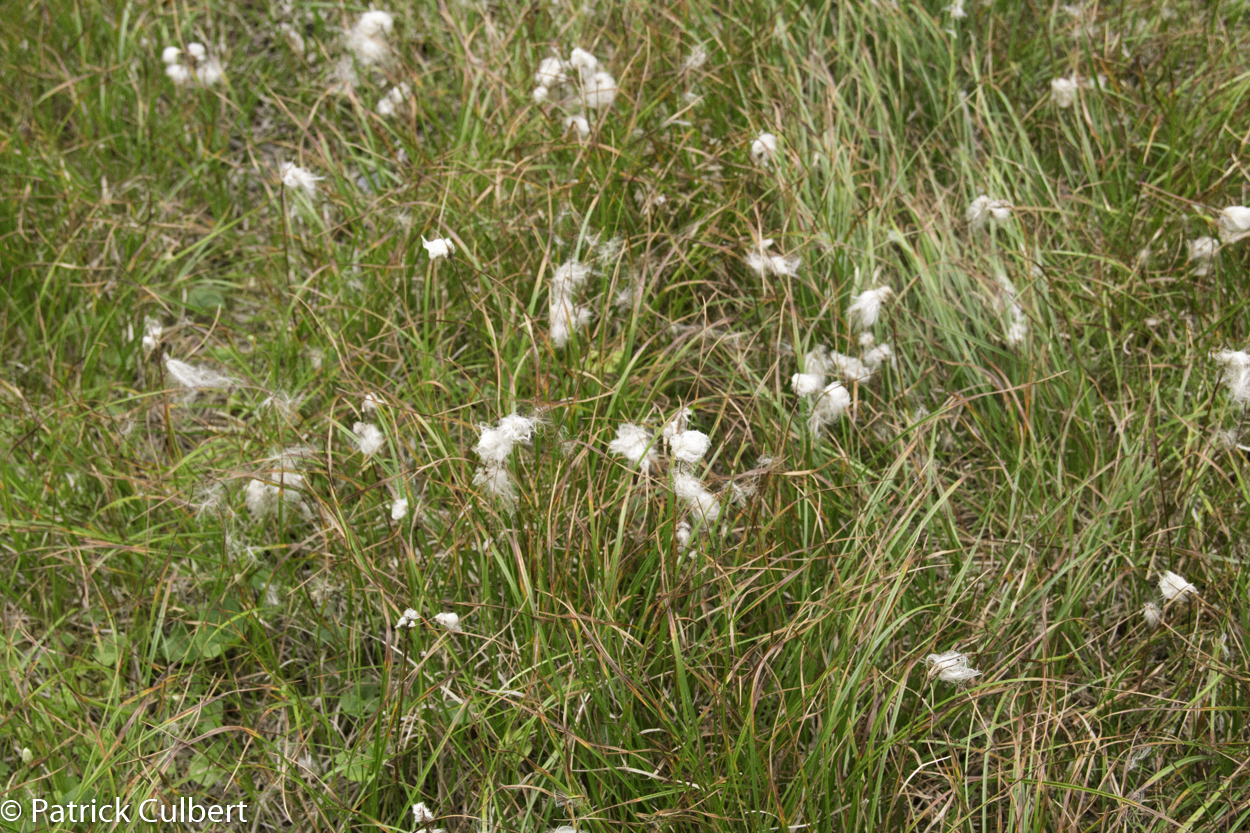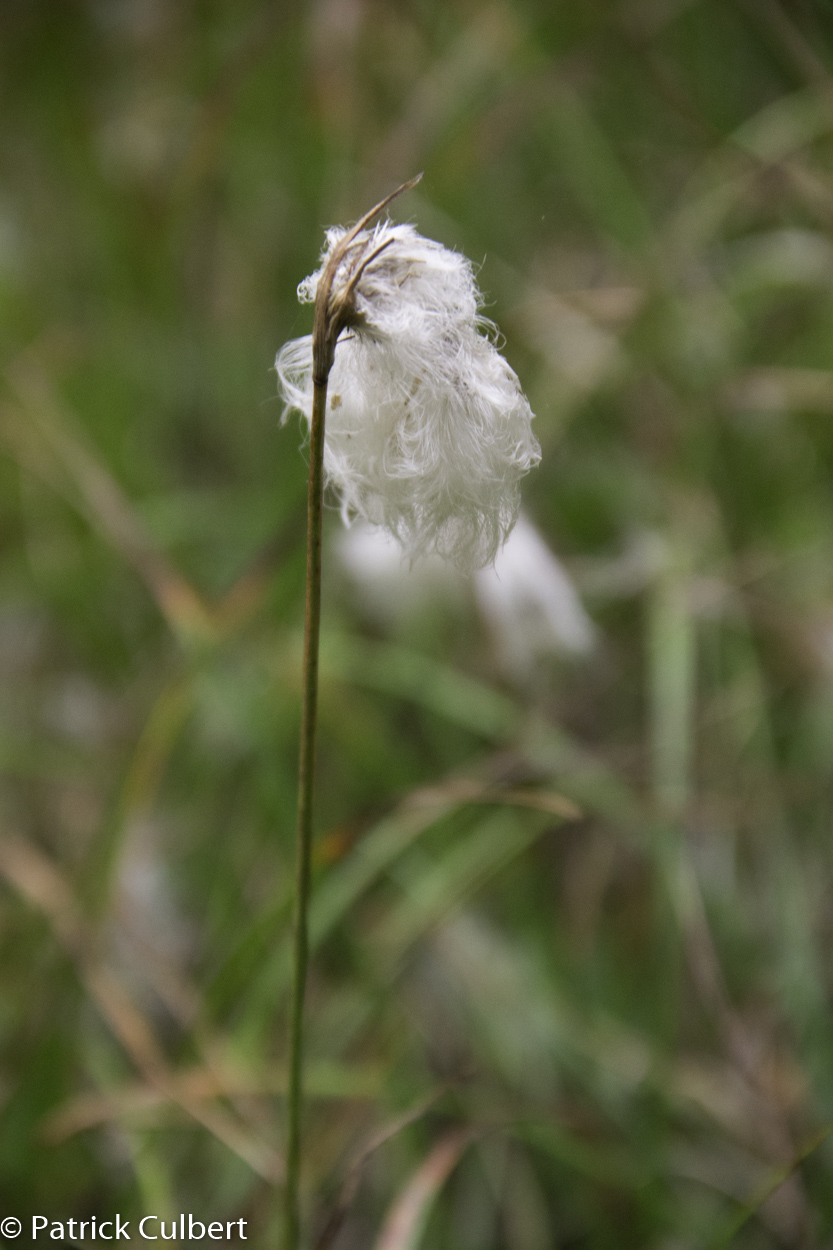Eriophorum angustifolium – narrow-leaved cotton grass
Common Name
narrow-leaved cotton grass
Family
Cyperaceae
Scientific Name
Eriophorum angustifolium
Soil Moisture Regime (SMR)
- Wet (W)
- Very Wet (VW)
Soil Nutrient Regime (SNR)
- Poor (P)
Hitchcock, C. Leo, and Arthur Cronquist. Flora of the Pacific Northwest: An Illustrated Manual © 1973. Reprinted with permission of the University of Washington Press.
General / Habitat
- A widely distributed, hardy sedge
- Grows in fens, wet meadows and stream banks
- Widespread and common from low to high elevations
Key Identifying Characteristics
- Form: Stems grow singly or a few together, up to 80 cm tall
- Leaves: Grow from base and along stem, flat below the middle and channelled toward the tip, 2-6 mm wide
- Flowers: Drooping spikelets, 2 or more leafy involucral bracts longer than inflorescence
- Fruit: Seed-like achenes surrounded by numerous, long white bristles; infructescence is highly conspicuous and cotton-like in appearance
Lookalikes
- Can distinguish from other Eriophorum based on number of stems arising from rhizome and 2-8 flowering heads
Interesting Characteristics
- Stems were eaten and used in medicine by aboriginal groups, especially in Alaska
External References
Sources
Douglas, G.W. et al (Editors). 1998-2002. Illustrated Flora of British Columbia, Volumes 1 to 8. B.C. Min. Environ., Lands and Parks, and B.C. Min. For., Victoria, B.C.
Pojar, J. and A. MacKinnon. 2014. Plants of Coastal British Columbia Including Washington, Oregon & Alaska. B.C. Ministry of Forestry and Lone Pine Publishing. Vancouver, B.C.

